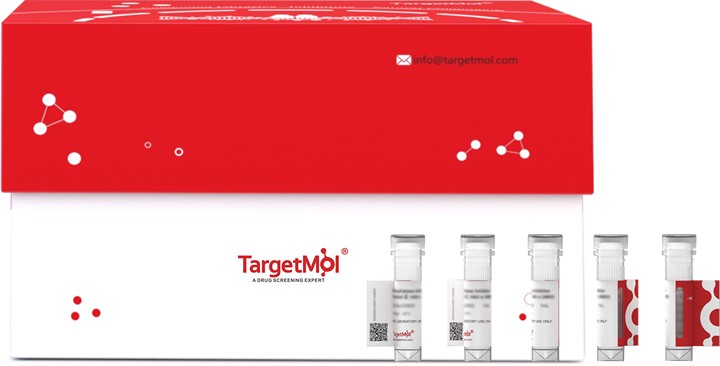购物车
- 全部删除
 您的购物车当前为空
您的购物车当前为空

SIAH1 Protein, Human, Recombinant (GST) is expressed in E. coli expression system with N-GST tag. The predicted molecular weight is 61.6 kDa and the accession number is Q8IUQ4.

| 规格 | 价格 | 库存 | 数量 |
|---|---|---|---|
| 20 μg | ¥ 1,320 | 20日内发货 | |
| 100 μg | ¥ 2,680 | 20日内发货 | |
| 1 mg | ¥ 11,700 | 20日内发货 |
| 生物活性 | Activity has not been tested. It is theoretically active, but we cannot guarantee it. If you require protein activity, we recommend choosing the eukaryotic expression version first. |
| 产品描述 | SIAH1 Protein, Human, Recombinant (GST) is expressed in E. coli expression system with N-GST tag. The predicted molecular weight is 61.6 kDa and the accession number is Q8IUQ4. |
| 种属 | Human |
| 表达系统 | E. coli |
| 标签 | N-GST |
| 蛋白编号 | Q8IUQ4 |
| 别名 | Siah-1a,SIAH1,Seven in absentia homolog 1,RING-type E3 ubiquitin transferase SIAH1,E3 ubiquitin-protein ligase SIAH1 |
| 氨基酸序列 | MTGKATPPSLYSWRGVLFTCLPAARTRKRKEMSRQTATALPTGTSKCPPSQRVPALTGTTASNNDLASLFECPVCFDYVLPPILQCQSGHLVCSNCRPKLTCCPTCRGPLGSIRNLAMEKVANSVLFPCKYASSGCEITLPHTEKADHEELCEFRPYSCPCPGASCKWQGSLDAVMPHLMHQHKSITTLQGEDIVFLATDINLPGAVDWVMMQSCFGFHFMLVLEKQEKYDGHQQFFAIVQLIGTRKQAENFAYRLELNGHRRRLTWEATPRSIHEGIATAIMNSDCLVFDTSIAQLFAENGNLGINVTISMC |
| 蛋白构建 | 1-313 aa |
| 蛋白纯度 | > 90% as determined by SDS-PAGE. |
| 分子量 | 61.6 kDa (predicted) |
| 内毒素 | < 1.0 EU/μg of the protein as determined by the LAL method. |
| 缓冲液 | Tris-based buffer, 50% glycerol |
| 复溶方法 | A Certificate of Analysis (CoA) containing reconstitution instructions is included with the products. Please refer to the CoA for detailed information. |
| 存储 | Lyophilized powders can be stably stored for over 12 months, while liquid products can be stored for 6-12 months at -80°C. For reconstituted protein solutions, the solution can be stored at -20°C to -80°C for at least 3 months. Please avoid multiple freeze-thaw cycles and store products in aliquots. |
| 运输方式 | In general, Lyophilized powders are shipping with blue ice. Solutions are shipping with dry ice. |
| 研究背景 | E3 ubiquitin-protein ligase that mediates ubiquitination and subsequent proteasomal degradation of target proteins. E3 ubiquitin ligases accept ubiquitin from an E2 ubiquitin-conjugating enzyme in the form of a thioester and then directly transfers the ubiquitin to targeted substrates. Mediates E3 ubiquitin ligase activity either through direct binding to substrates or by functioning as the essential RING domain subunit of larger E3 complexes. Triggers the ubiquitin-mediated degradation of many substrates, including proteins involved in transcription regulation (ELL2, MYB, POU2AF1, PML and RBBP8), a cell surface receptor (DCC), the cell-surface receptor-type tyrosine kinase FLT3, the cytoplasmic signal transduction molecules (KLF10/TIEG1 and NUMB), an antiapoptotic protein (BAG1), a microtubule motor protein (KIF22), a protein involved in synaptic vesicle function in neurons (SYP), a structural protein (CTNNB1) and SNCAIP. Confers constitutive instability to HIPK2 through proteasomal degradation. It is thereby involved in many cellular processes such as apoptosis, tumor suppression, cell cycle, axon guidance, transcription regulation, spermatogenesis and TNF-alpha signaling. Has some overlapping function with SIAH2. Induces apoptosis in cooperation with PEG3. Upon nitric oxid (NO) generation that follows apoptotic stimulation, interacts with S-nitrosylated GAPDH, mediating the translocation of GAPDH to the nucleus. GAPDH acts as a stabilizer of SIAH1, facilitating the degradation of nuclear proteins. Mediates ubiquitination and degradation of EGLN2 and EGLN3 in response to the unfolded protein response (UPR), leading to their degradation and subsequent stabilization of ATF4. |